reviewed by Christina Lopez
Yes, you can make a tincture or an extract at home. It is easy. Tincture-making supplies are not complicated or hard to find. You may have everything you need already.
Your kitchen is likely loaded with useful supplies anxious to make herbal medicine right now. You may not know how prepared you are to start this adventure into tincture making. This useful guide will help you see what you have and what you still need to get going.
This is the second article in a series exploring the use and creation of tinctures and extracts. If you jumped in here and would like to see the first part, you can find it here-an Introduction to Using Herbs to Make Herbal Extracts & Tinctures.
Contents

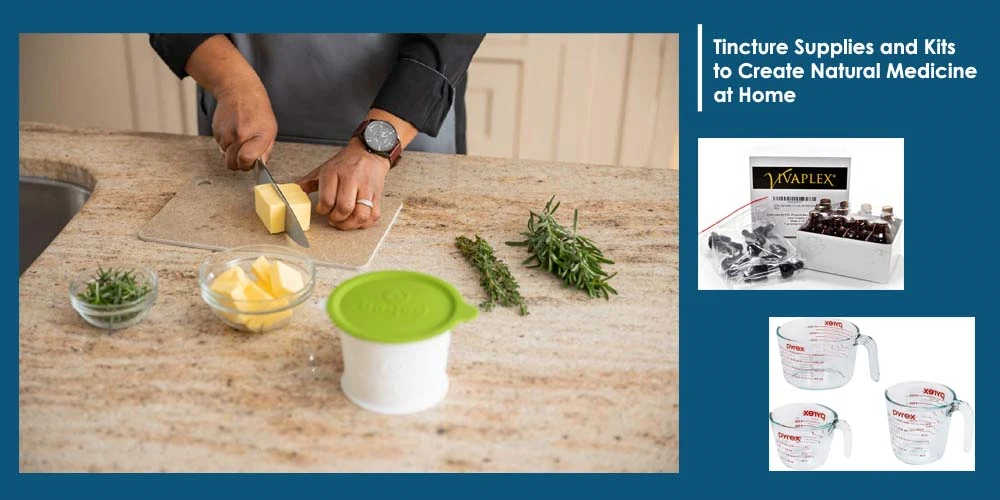
→Some of the links on this site and in this article are affiliate links that pay a commission for a completed purchase. This does not result in any additional cost to you. I do not write sponsored posts. I want to bring you real, unbiased information.
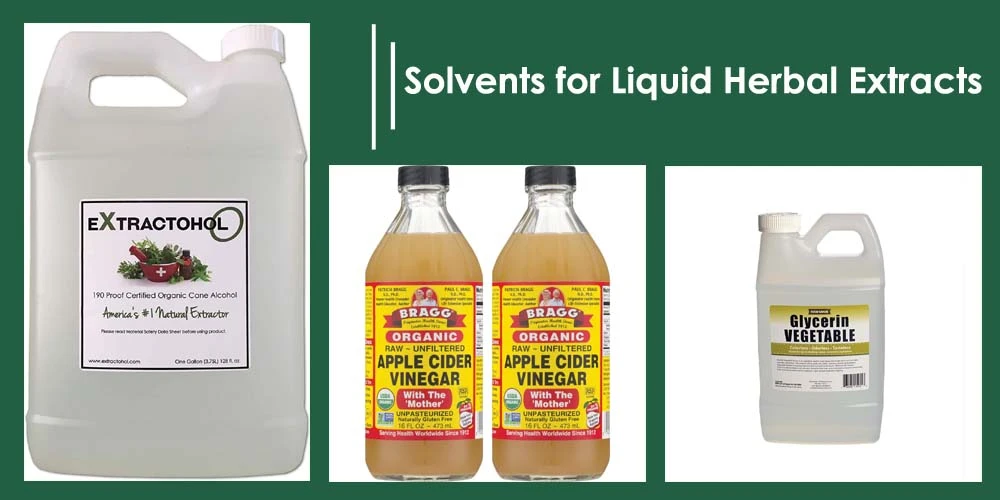
I am going to touch on the three main menstrua (solvents) used for creating herbal extracts. These are the primary solutions for the best extraction. The second on the list may be missing from your tincture-making supplies list. For alcohol-free options, you may want to acquire some.
Water is an additional liquid often used in combination with these solvents. Never alone as an extraction method.
Why not use water alone? Water cannot extract all the constituents of an herb (valuable substances). In addition, it has no preservative capability. Think about your cup of herbal tea. How long do you think your herbal tea would be good? Very quickly it would become stagnant, possibly mold and collect bacteria.
Alcohol is a potent solvent when it comes to extracting tinctures. The proof of the alcohol makes the extraction procedure consistent. Keeping the number of valuable constituents extracted reliable time after time.
Due to religion, age, and values, this is not always the ideal solvent for everyone.
80 to 90 proof alcohol is the standard preference when it comes to making most tinctures. Vodka is a common choice and is often my preference for this type. This works well for most dried herbs and low water content fresh herbs.
Higher grain alcohols like 190 proof are needed for other herbs types and fresh varieties. Resins and gum-style herbs will not extract well or at all in weaker solvents.
Stronger is not better when it comes to making tinctures in alcohol. The right mix and balance create an ideal extract that preserves without harming the essence of the herb. Always look to recipes and herbs for ideal methods.


In tincture recipes, we will explore exact measurements and proofs.
An alternate solution to creating an extraction without the use of alcohol is vegetable-based glycerin. It is a clear, colorless, and odorless liquid with a sweet taste. It has a fairly thick consistency that reminds me of corn syrup.
Distilled water is part of a dilution in extracting dried herbs with glycerin. With fresh herbs, water is less necessary and excluded from most extract recipes.
Food grade glycerin is essential, and kosher or organic is highly recommended! Glycerin retailers should not be afraid to tell you what they used to create the product. Palm, coconut, soy, and corn can be possible ingredients. For some, these can cause sensitivities. They are not always listed.


I do not mind the flavor of vinegar, so creating a tincture with this solvent is not an issue. Vinegar flavor will not go away from the enhancements of herbs being infused inside of it. This is used quite often as an alternative to alcohol. I find the extraction more closely mimics herb strength.
Raw apple cider is the best choice when it comes to this type of solvent. Wine, rice vinegar, and rice wine vinegar are also options. Do not use white vinegar.


Glass jars only for the brewing or processing phase of your tinctures. At the end of the brewing phase, you will need to store these completed tinctures in darker bottles for long-term keeping. Dosage easy bottles with droppers can be a super easy solution for use and keep.
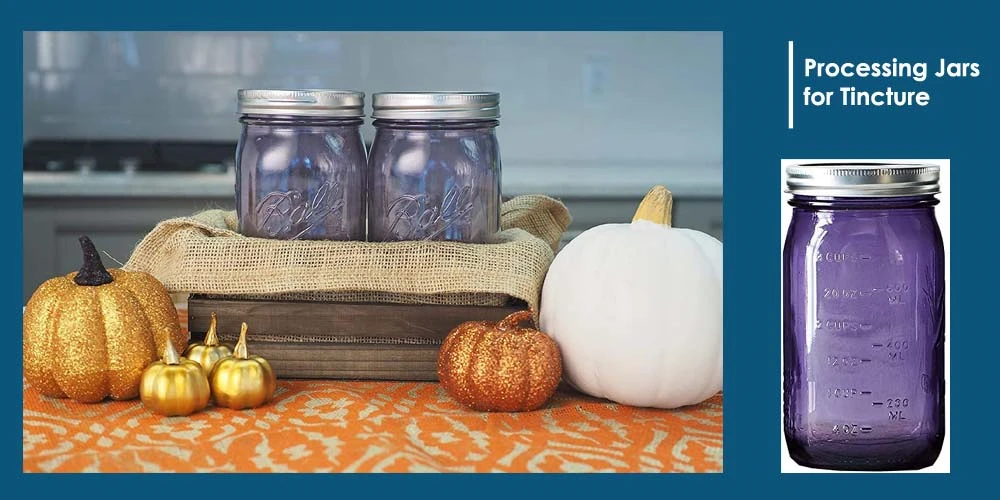
Call these jars whatever you like. Brewing jars, extraction jars, or processing. They are basic glass jars that will hold your extracting solution and herbs while they are processing.
Tip! Use parchment paper or plastic wrap between the solution and a metal lid to prevent it from touching. Or use BPA-free plastic lids designed for your jars.




Just say No to plastic jars. I do not use plastic jars and I recommend you avoid this as well. Plastic tends to hold previous traces of tinctures. There is also a risk of BPA and other plastic contaminants.
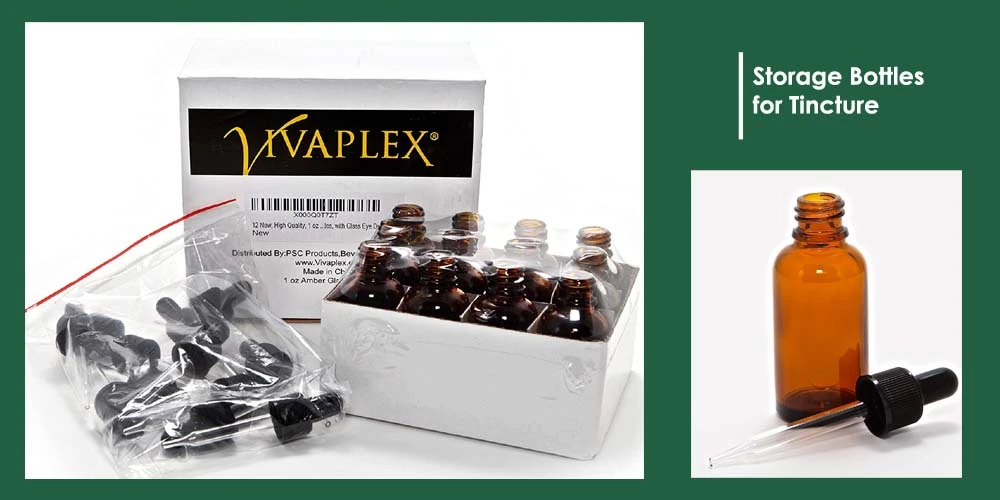
Again, mason jars that are darker tinted in color can be an option for storing some tinctures long term. Large jars are not ideal for administrating in dosages but are good for excess that does not fit in smaller dropper bottles.
Amber-colored bottles are best! For long-term storage, amber-colored bottles or darker ones eliminate the ability for light to penetrate. Sunlight can cause your tincture to age, change and expire early. You worked hard on your tinctures; store them in the best ways.
Amber or dark-colored bottles with droppers make ideal storage with easy dosage capabilities. They come in assorted sizes and can be reused time and time again. I do recommend replacing droppers. Most droppers are made of a plastic material and can be tainted from previous tinctures.
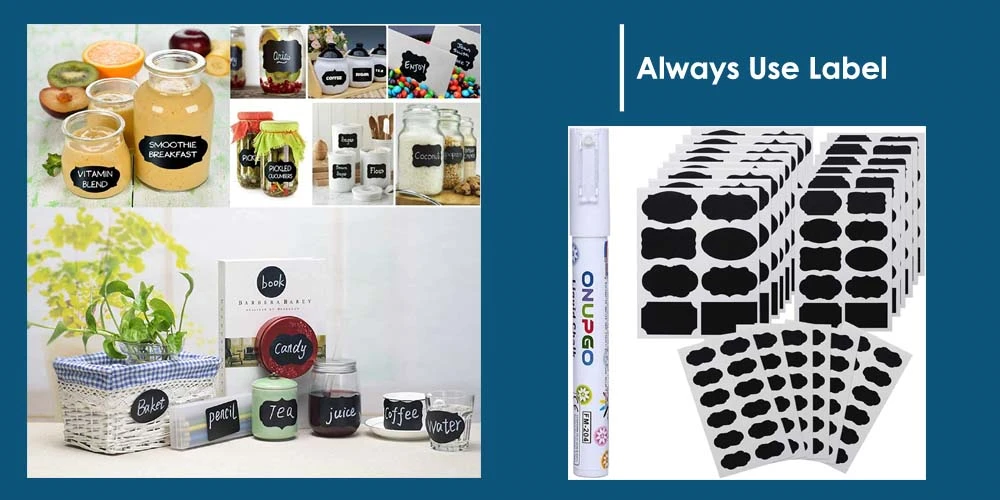
This is the stress now and throughout this series. Label everything through every stage. This makes labels an essential supply in making tinctures. Self-sticking is great if they adhere well. Struggling to get a label off is far better than stressing over a bottle that a label has accidentally fallen off.
Labels should be large enough that you can write clearly all tincture information. Dates, measurements, herbs, expected shelf life, and dosage information. Additionally, you will want to label your tinctures during the different processes, brewing, and completion.
I use nothing fancy in phase one of brewing. I write on paper and cover a nice sticky piece of packing tape to adhere to the bottle. You can get more decorative with the end bottles. Look at what fits your be sure to use a label!
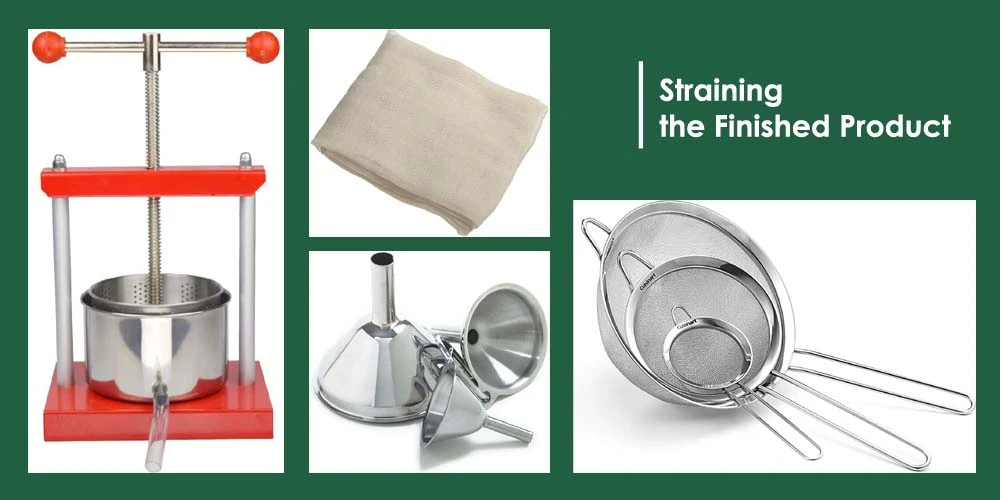
You are likely already cooking at home, so you have most, if not all, what you need to strain. There is not much difference in strainers in tincture making supplies list. There are some special considerations due to the fine material, however. We'll review how to keep your tinctures clean with the proper straining supplies.
Colander, Sieve, or strainer; however, you want to refer to it, I am sure you understand what I mean. This fine mesh is ideal for working with brews. They are inexpensive if you do not have one already. I would look at various sizes, so you have options for different quantities of extractions.
Can you get away with other fine strainers? Maybe but keep this in mind. Not aluminum when working with acidic materials. It will cause leaching of the metal into your tincture. I am also very cautious of plastics, as I stated earlier in this article. Besides, some of the intensity of your tinctures can permanently stain or be embedded in plastic.


Unbleached fine cheesecloth is best. You may already use this in your kitchen, or perhaps you have always wondered, "what do people use this stuff for." Well, this is one thing. Besides the colander above, cheesecloth is essential.
The cloth will collect all the herb matter when you are straining your tincture. It creates an additional barrier for fine pieces of herbs and dust from making it into your final product. Additionally, the herb matter collected in the cheesecloth you will be squeezing out to remove more extract.


If you are serious about making tinctures and extracts, you may want to look at a tincture press. For most people making tinctures at home, some good old fashion squeezing power will work well. For others, the investment is worth it.
Tincture presses vary in size and price. They extract more than we can by hand. Some people believe it makes for a stronger tincture. Since I have not used a press, I cannot judge it personally. I have been considering one for a great many years.


This is an optional as far as tincture making supplies go. For many who make a lot of tinctures and extracts, this becomes a must-have.
Finally, you will need to transfer your completed tincture to their storage bottles. Funnels make this process painless. The last thing you want to do is go through the lengthy process of creating a tincture only to lose most of it trying to get it in a bottle.
Again, I want to reinforce stainless steel! For all the same reasons I have used above. They are inexpensive and come in a variety of sizes that will work with your bottle choices.
Suggested Product: Norpro Stainless Steel Funnels Set. Three funnels just the right size for moving finished tinctures into bottles without losing a drop. Dishwasher safe and a clip ring to help keep them all in one place.

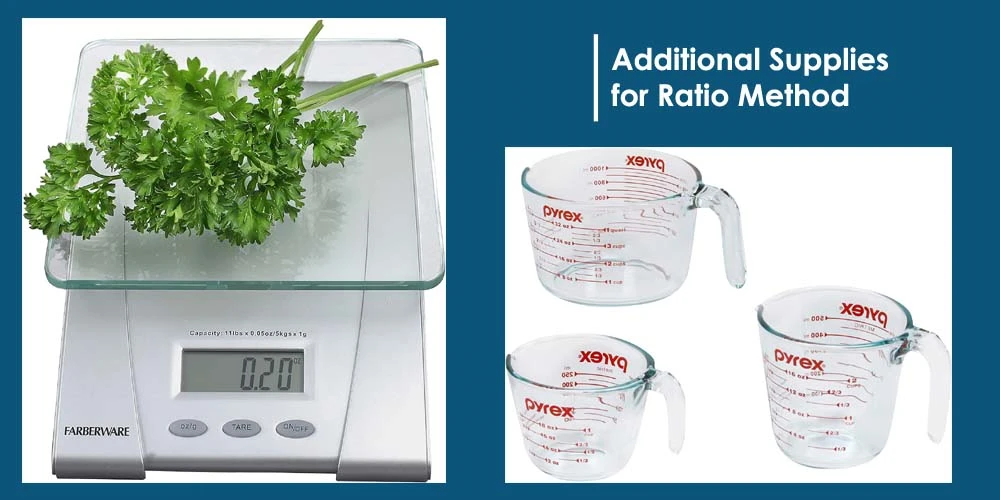
The last article discussed the two methods that I use when making extracts and tinctures: the Folk Method and the Ratio Method. The precise measuring in the ratio method requires a couple of extra items in your supply list.
A digital kitchen scale that measures ounces works best-the more precise, the better. Herbs can be very light so take that into account when planning out a kitchen scale to use. It needs to measure some very potential light substances.
You may already have a digital scale at home. Check it for the capability of measuring herbs.
⇒ Suggested Product: This Farberware scale has been in my kitchen for a while now. I find it very accurate. I like the tare feature that allows me to use my jars also to weigh my herbs. You can check it out for yourself.


This is likely a key one of the tincture-making supplies you have in your kitchen already. I use glass in my kitchen all the time. I find them the easiest to read from any angle. Glass is also the ideal type to make tinctures.
How many think I sound like a broken record yet? Well, maybe after you hear this. Avoid plastic! Alcohol and vinegar as solvents are highly acidic, making plastic a bad idea. It can pull even the most trace materials from a measuring device that you think is clean. Plastic holds things even you cannot see. Just avoid tinctures as the best practice.


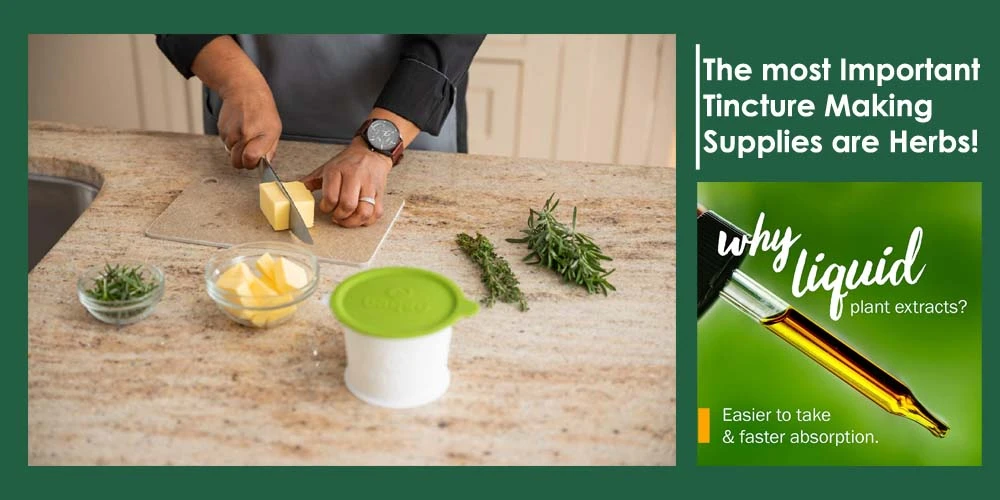
I have not forgotten the most important tincture-making supplies you will need, the Herbs! This is an article all its own. In the next post, we will be discussing the herbs to use in general when making liquid herbal extracts.
Growing your own is always great! That is not possible for everyone, and certainly not every type.
We will look at the do's and don't when looking at herbs for creating tinctures and extracts. Then it is on to recipes. Who is ready to get creative?
I have already begun to compile a list of requests from some people on what they would like to see. If you would like to have a say in what is up and coming in this series, you can. Just drop me a comment below and make sure your voice is heard.
I am so encouraged by the passionate feedback and response I have received so far!
 |
 |
 |
 |

About Christina Lopez
Christina Lopez grew up in the scenic city of Mountain View, California. For eighteen ascetic years, she refrained from eating meat until she discovered the exquisite delicacy of chicken thighs. Christina is a city finalist competitive pingpong player, an ocean diver, and an ex-pat in England and Japan. Currently, she is a computer science doctoral student. Christina writes late at night; most of her daytime is spent enchanting her magical herb garden.
 |
 |
 |
 |
Get new FREE Gifts. Or latest free growing e-books from our latest works.
Disable Ad block to reveal all the links. Once done, hit a button below
 |
 |
 |
 |